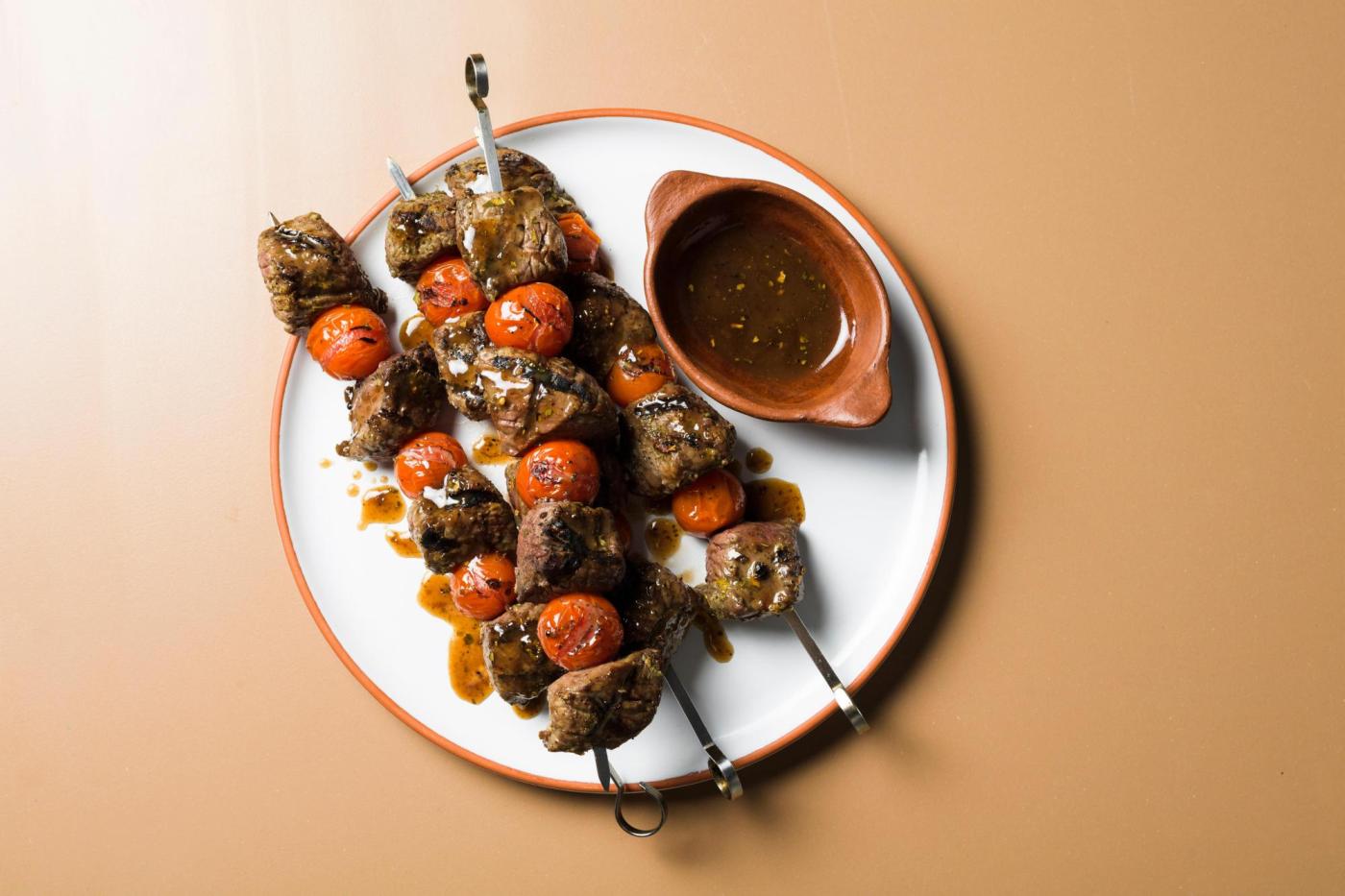Discover the Rich Flavors of Portuguese Espetada with Bay Leaf-Infused Beef Skewers

On the picturesque Portuguese island of Madeira, a culinary tradition thrives that combines the simplicity of grilling with the aromatic complexity of bay leaves. Known as espetadas, these beef skewers are a staple of Madeiran cuisine, where chunks of beef are threaded onto fresh-cut bay branches and cooked over open fire embers. The bay leaves infuse the meat with a distinctive menthol aroma and flavor, creating a sensory experience that is as aromatic as it is flavorful.
In a modern twist on this traditional dish, Christopher Kimball’s “Milk Street 365: The All-Purpose Cookbook for Every Day of the Year” offers a streamlined version using dried bay leaves. By pulverizing the dried leaves into a seasoned salt, and mixing in garlic and olive oil, this recipe captures the essence of the original while adapting it for home kitchens. The seasoned beef is then grilled on metal skewers, offering a taste of Madeira without the need for a bay tree in your backyard.
The Art of Espetada: Tradition Meets Innovation
Espetadas are more than just a meal; they are a celebration of Madeiran culture and culinary ingenuity. Traditionally, the skewers are made from laurel branches, a nod to the island’s abundant bay trees. This method not only imparts flavor but also connects the dish to its natural roots.
In Kimball’s adaptation, the use of dried bay leaves allows cooks to replicate the dish’s signature flavor without needing fresh branches. The dried leaves are ground into a fine powder, creating a bay-infused salt that seasons the beef. This innovation maintains the dish’s authenticity while making it accessible to a global audience.
Ingredients and Preparation
The recipe calls for beef sirloin tips or flat iron steak, both known for their tender texture and rich flavor. For those willing to indulge, beef tenderloin is an excellent choice. The beef is seasoned with the bay salt mixture, which includes finely grated garlic and olive oil, before being threaded onto skewers with cherry tomatoes.
Start to finish: 45 minutes, plus grill prep. Servings: 4 to 6.
The addition of tomatoes provides a fresh contrast to the savory beef and enhances the dish’s visual appeal. A simple Madeira reduction, seasoned with garlic and bay salt, serves as a glaze, enriching the beef’s flavor profile.
Cooking Techniques: From Grill to Plate
Grilling is at the heart of espetada preparation. Whether using a charcoal or gas grill, achieving the perfect char is essential. The skewers are cooked until the beef reaches medium-rare, with a light char on both sides. This process not only cooks the meat but also caramelizes the tomatoes, adding depth to the dish.
The Madeira reduction is a key component, offering a sweet and savory finish. Made by simmering Madeira wine with garlic and bay salt, the sauce is emulsified with chilled butter for a rich, velvety texture. This reduction is drizzled over the skewers just before serving, enhancing the dish’s complexity.
A Culinary Journey: From Madeira to Your Table
While the recipe is rooted in Madeiran tradition, it also reflects broader culinary trends. The use of bay leaves as a primary flavoring agent highlights a growing interest in herbs and spices that offer both flavor and aroma. Additionally, the recipe’s adaptability speaks to a modern culinary landscape where traditional dishes are reimagined for contemporary tastes.
Experts in culinary arts note that such adaptations are crucial for preserving traditional foods while making them accessible to new generations. By incorporating elements like dried bay leaves and a Madeira reduction, Kimball’s recipe bridges the gap between authenticity and innovation.
“The flower of the espetada,” as the Portuguese call the bits of fat left untrimmed, is essential for flavor and charring.
As food enthusiasts continue to explore international cuisines, dishes like espetada offer a gateway to understanding the cultural and historical contexts of food. This recipe, with its blend of traditional techniques and modern convenience, invites home cooks to embark on a culinary journey from the comfort of their kitchens.
For those interested in exploring more recipes, Christopher Kimball’s Milk Street offers a wealth of culinary inspiration, bringing global flavors to everyday cooking.






